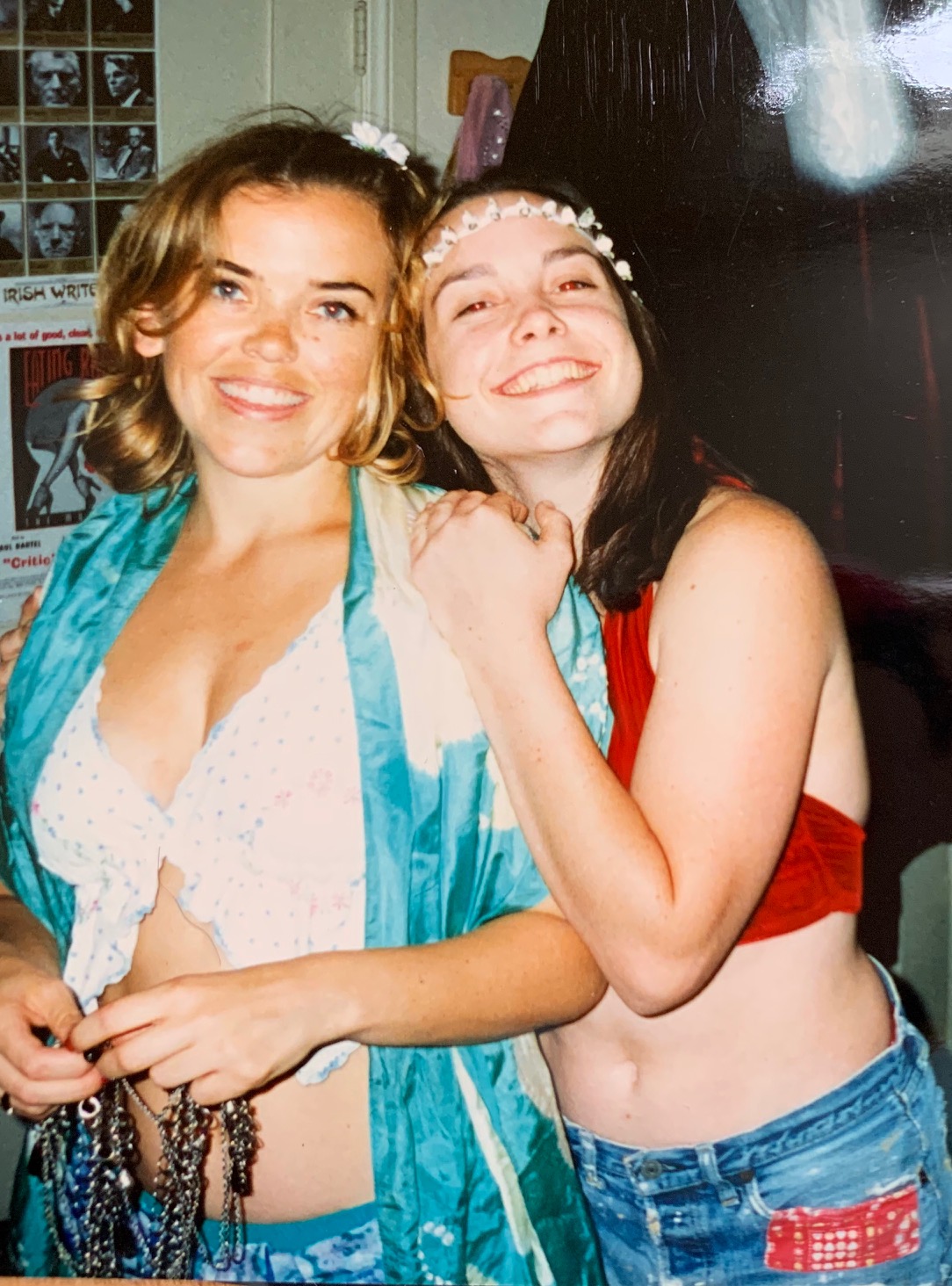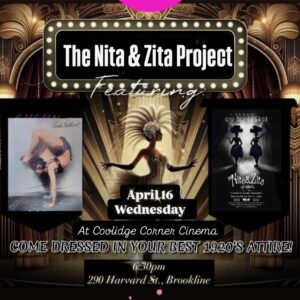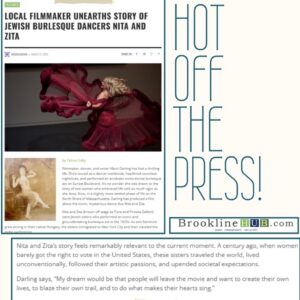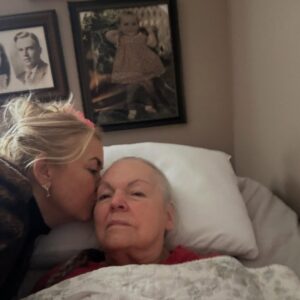People say that time heals all wounds. I wish that were true. In many ways, I feel like time makes grief even sharper. So many moments when I tap my phone to call my person and remember she isn’t there, the grief unleashing itself on me all over again.
The way I cope is by maniacally creating — I sit in my metaphorical barn with my spinning wheel, spinning wool, spinning straw, spinning… until it feels like the spinning wheel has caught fire and I need to step away.
Kim’s the one who would tell me to create time to gently care for myself, to counter the jagged edges of my grief with softness and deep breaths, and then she was gobbled up by the worst wolf of all, the one that plays tricks on your mind and makes you think the light is gone completely and is never coming back.
I try to follow her advice. I go outside to walk alone in the woods, listening to the birds chirping and the soft rumble of the sea nearby, but it doesn’t console me, it makes me long for her even more, wishing she were with me. I wipe the tears running down my neck.
Joseph Campbell called it The Unhealable Wound, a loss so deep and transformative it will always ache, it can never be healed. Yesterday, I came across my slides for the storytelling class I teach: Writing for Transformation.
When I saw the words “The Unhealable Wound,” my heart chimed with recognition. This is where I am right now—living with my unhealable wound. Knowing this brings me comfort in some strange way because I’m not trying to force healing or floundering around wondering why everyone else seems to be healing, but not me.
It’s hard to put into words because this kind of grief goes beyond words, but I do love words. There is magic in words. So I’ll try…
Our greatest scholar on myths and fairy tales, Joseph Campbell, noticed that nearly all stories in mythology follow something he called the “hero’s journey,” and it has three parts:
1. Call to Action: The character experiences a call to action, often a great loss— something that knocks her out of her old life and into the woods, the dark and dangerous unknown.
2. The Quest: This becomes a quest of some sort and our character must summon strength she didn’t know she had to fight a dragon, a wolf, or defeat some sort of darkness, often with sharp teeth.
3. The Return: This is the part where the character returns and becomes a “hero.” She is now changed. She has faced unbearable loss, overwhelming grief, fear of the unknown, and learned to find her way through the darkness. She has conquered it, and now returns to her tribe, village, people, to teach others.
Campbell wrote, “It is by going down into the abyss that we recover the treasures of life. Where you stumble, there lies your treasure.”
Maybe the greatest treasure of all is the unhealable wound.
Campbell based this idea on Carl Jung’s theory about the “Wounded Shaman,” the person in the tribe who is harmed somehow or gets sick, must go off and heal herself, and by doing so, she can return to her tribe as a wounded shaman, a magical person who can heal others.
Except not everyone makes it back. Some are defeated, some disappear forever, and some choose to stay in that murky no-man’s-land. We see the Unhealable Wound everywhere: from Antigone in ancient Greece to Beowulf in ancient Britain; from Harry Potter’s scar to Frodo in Lord of the Rings to Siddartha, Jesus, and Mohammed… even the Great Gatsby had an unhealable wound.
I say “heal” when I’m talking about an “unhealable” wound, but therein lies the healing—by understanding that some things are unhealable.
Mind-bending, right?
It’s the dialectic of knowing two opposite things can be true at once.
Campbell wrote, “The very cave you are afraid to enter turns out to be the source you are looking for.”
This is the jewel, the treasure the “dragon” is sitting on, and that “dragon” for me is my grief. It’s dark, it’s jagged, but it also glitters like that first moment of twilight, when the stars start appearing one by one.
There’s a place I go to find her, and its the place Kim and I always connected: dance. It was always our axis mundi, our connection between heaven and earth. I light a candle in my pink living room, turn on one of our favorites for sweeping soul music, Dead Can Dance, and I walk to the middle of my pink rug. I stand still, close my eyes and allow myself to take a deep breath. That breath is always where the grief erupts, but I stay with it, imagining golden cords anchoring myself to the earth and shooting up into the sky, out in all directions. With my eyes closed, I wrap my arms around my own body and imagine I am wrapping my arms around her. Sometimes I let it take me to my knees. Sometimes I land on the ground in a puddle, and sometimes I dance right through it, undulating with tears running down my face, arching my back and wailing, allowing the punch of grief to double me over.
She would love this way of healing the unhealable–she loved deep emotional dancing and she would often look at me while we were dancing somewhere, until I locked eyes with her, an ecstatic smile on her face. She would cover her chest with one hand, tapping her heart like it was radiating joy right through her fingers, and reach out to me with the other hand, with so much love on her face, just a dream-like radiance.
Dance was the place our souls connected outside of words, from the Grateful Dead shows in Oakland to a belly dancing drum circle surrounded by women with flying hair and flowing skirts, shaking their hips around us like some sort of ancient ritual around a bonfire; from the drum circles of Venice Beach at sunset, when we took off our roller skates and danced barefoot on the sand as the sky changed colors, brilliant velvety golds, oranges, and reds, and finally Magic Hour, when the stars poked through and the veil between worlds grew ethereal. It even happened in the smoky nightclubs after we had performed, and we pranced onto the dance floor in impossibly high heels and matching kimonos, and wherever we were, it was always the same: she would lock eyes with me, tap her palm over her heart, shaking her head and throwing her head back in radiant joy.
She looked like some sort of goddess scattering starlight made of love-bursts right out of her body to wrap around mine.
I think she would like that I am not running from my pain. but absorbing and integrating it into my soul, allowing it to change me moment-to-moment, and knowing that time and space can not separate me from her.
I think she would encourage me to keep spinning my stories and assure me that they are indeed, spinning into gold.
I think she would like that I have found healing in my Unhealable Wound.















2 Responses
Beautiful piece. Beautiful friendship and soul mates. Love you both.
Thank you for sharing your story. Many people can’t face that some wounds are forever. I feel you have honored that pain.